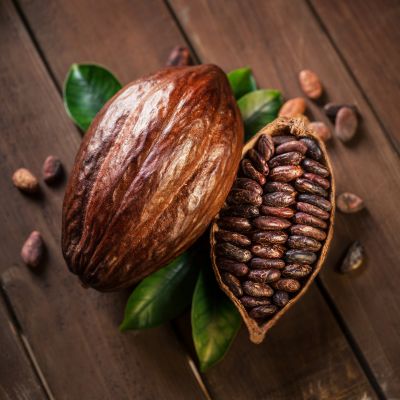Food preservation, a critical aspect of daily life, operates behind the scenes to ensure access to safe, nutritious food whenever needed.
In this overview, we’ll introduce the concept of food preservation, emphasizing its importance in ensuring food safety, preventing food spoilage, and minimizing waste through effective food storage techniques.
Understanding Food Preservation
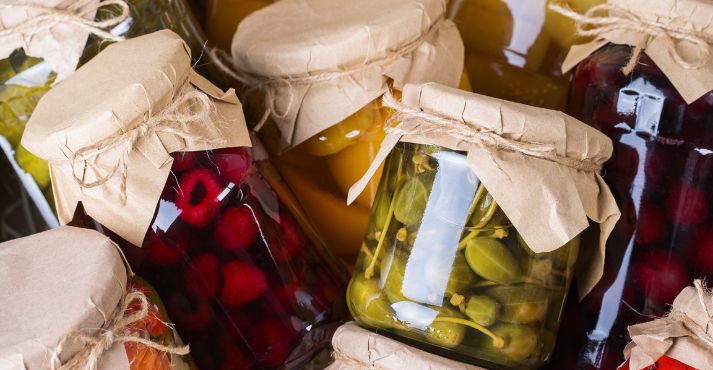
Food preservation is a fundamental practice that extends beyond the kitchen and into the heart of food safety, sustainability, and reduced waste.
It is the art and science of extending the shelf life of food products while safeguarding their safety and quality. In this overview, we will define food preservation and provide a concise understanding of its purpose.
What is Food Preservation?
Food preservation encompasses a spectrum of techniques and methodologies, each with a singular mission: to conserve food resources and prolong the freshness of edibles.
This is achieved through a synthesis of time-tested traditions and innovative methods, all aimed at achieving the following objectives:
1. Preventing Spoilage
Food preservation techniques are a bulwark against the encroachment of microorganisms such as bacteria, molds, and yeasts. By curbing their growth, these methods effectively thwart food spoilage and ensure the safety of consumables.
2. Extending Shelf Life
The primary goal of food preservation is to extend the shelf life of various food items. This means that perishable goods can be stored and enjoyed well beyond their natural season or harvest, reducing the need for continuous production and transportation.
3. Enhancing Food Safety
Ensuring food safety is paramount, and food preservation is a frontline defense. It halts the development of harmful pathogens, diminishes the risk of foodborne illnesses, and affirms that our food is delectable and secure.
4. Reducing Food Waste
Food preservation aligns harmoniously with the global endeavor to curtail food waste. By averting Spoilage, it minimizes the volume of food that goes uneaten and discarded, in turn conserving resources and addressing hunger-related issues.
5. Enabling Year-Round Availability
Food preservation techniques empower the year-round availability of seasonal produce, guaranteeing access to fruits, vegetables, and other perishables outside their natural harvest windows. This is particularly pivotal in regions with distinct seasons or limited local production.
6. Cultivating Culinary Creativity
Preservation methods have sculpted the landscape of culinary traditions worldwide. Techniques like pickling, fermenting, and drying have spawned distinctive flavors, textures, and culinary innovations.
7. Reducing Environmental Impact
By extending the shelf life of food, preservation techniques can mitigate the environmental toll associated with food production, transportation, and disposal, championing a more sustainable and eco-conscious food system.
History of Food Preservation
To develop a comprehensive appreciation for the art and science of food preservation, it is imperative to undertake a historical exploration, delving into the evolution of these techniques over time.
From ancient practices to today’s innovative methods, food preservation has been a cornerstone of human survival and culinary tradition.
Ancient Food Preservation
The roots of food preservation stretch far back into our history. In ancient civilizations, ingenious methods were developed to ensure food availability beyond the harvest season. Some of the earliest preservation techniques included:
Drying: The sun’s heat was harnessed to remove moisture from fruits, vegetables, and meats, preventing Spoilage.
Fermentation: The transformative power of microorganisms was employed to preserve foods like cabbage into sauerkraut and grapes into wine.
Salting: Salt was used to draw out moisture, creating an inhospitable environment for microorganisms.
Pickling: Foods were submerged in acidic solutions like vinegar to extend their shelf life.
Evolution of Preservation
As societies advanced, so did their methods of food preservation. The Middle Ages saw the rise of salted and smoked meats, making long sea voyages and harsh winters more manageable.
In the 19th century, the advent of canning by Nicolas Appert and later advancements in refrigeration by Carl von Linde revolutionized the food industry.
The 20th century has witnessed the development of frozen foods, which brought convenience and year-round availability to consumers.
In recent decades, innovative techniques like vacuum packaging, modified atmosphere packaging, and high-pressure processing have further extended the shelf life of foods while maintaining their quality.
Traditional vs. Modern Preservation
While modern methods have undoubtedly streamlined food preservation, traditional techniques play a significant role in culinary traditions worldwide.
At home and in small-scale artisanal settings, numerous skilled producers and passionate individuals continue to use traditional techniques such as smoking, drying, and fermenting. These methods help craft distinctive and delicious preserved foods.
Methods of Food Preservation
1. Canning and Jarring
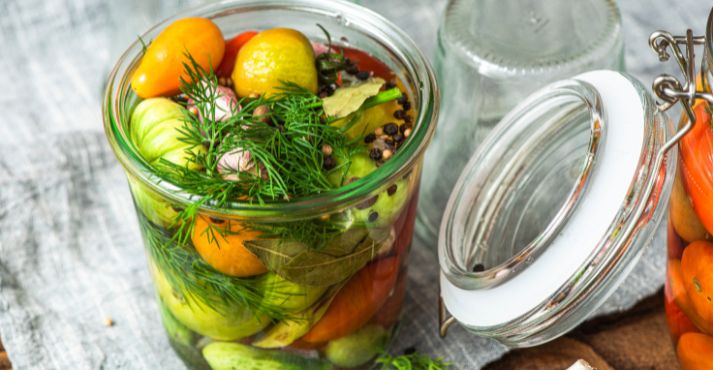
Canning and jarring are time-honored methods of food preservation that allow us to savor the flavors of seasonal produce long after their harvest.
These techniques, often practiced in homes and food production facilities, involve using airtight containers to seal the goodness of fruits, vegetables, and more.
The Food Canning Process
Canning is a meticulous process designed to extend the shelf life of foods while maintaining their nutritional value and taste. Here’s a simplified overview of the canning process:
- Preparation: Fresh produce is thoroughly cleaned and prepared. This may involve blanching (briefly boiling) vegetables or peeling fruits.
- Packing: The prepared food is carefully packed into glass jars or metal cans, leaving appropriate headspace to allow for expansion during processing.
- Heat Treatment: The jars or cans are then sealed and subjected to heat. This heat treatment serves multiple purposes:
- It destroys any existing bacteria, yeast, or molds that could cause Spoilage.
- It creates a vacuum seal that prevents the entry of air and microorganisms, keeping the contents safe.
- Cooling and Sealing: The jars or cans can cool after heat treatment. A vacuum seal forms as they cool, ensuring an airtight environment within the container.
- Storage: The sealed containers can be safely stored at room temperature, making them convenient for long-term storage and use.
2. Freezing
Freezing is a remarkable method of food preservation that allows us to lock in the freshness and quality of various food items.
It is a widely practiced technique in homes and the food industry, ensuring we can enjoy the taste of seasonal produce and other perishables throughout the year.
The Role of Freezing in Food Preservation
Freezing is a straightforward yet highly effective method of preserving food. It involves lowering the temperature of food products to well below freezing (typically around 0°F or -18°C). Here’s how freezing contributes to food preservation:
- Preservation of Freshness: Freezing halts the growth of microorganisms, including bacteria and yeast, that can cause food spoilage. Freezing maintains the freshness of the food by preventing these organisms from thriving.
- Retention of Nutritional Value: When done correctly, freezing can preserve the nutritional value of foods. It helps retain essential vitamins and minerals, making frozen foods a viable source of nutrition.
- Texture and Quality: Freezing can help preserve the texture and quality of certain foods. For example, frozen fruits and vegetables can retain their crunchiness and flavor when adequately frozen and thawed.
- Long-Term Storage: One of the critical advantages of freezing is its suitability for long-term storage. Frozen foods can be stored for extended periods, allowing us to enjoy seasonal items year-round.
- Convenience: Frozen foods offer convenience to consumers. They are readily available and require minimal preparation, making meal planning and cooking more accessible.
3. Drying and Dehydrating
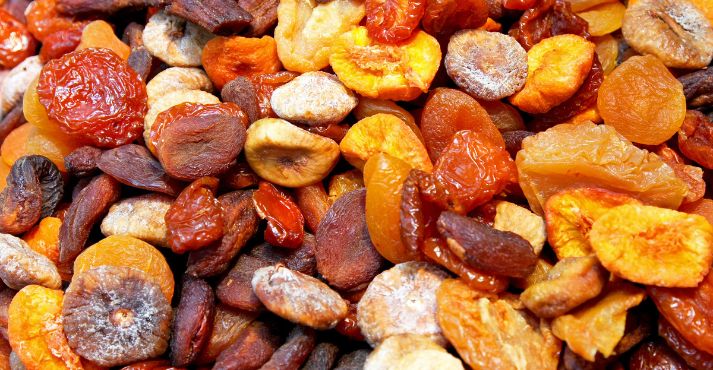
Drying and dehydrating are ancient yet effective methods of food preservation, allowing us to extend the shelf life of various food items while preserving their nutritional value and flavors.
Food Drying and Dehydration
Food drying and dehydration involve the removal of moisture from food products, a process that inhibits the growth of microorganisms and helps maintain the freshness and quality of the items. Here’s an overview of how this preservation method works:
- Preparation: The first step in food drying is preparing the food items. Fruits, vegetables, herbs, and even meats are sliced or chopped into small pieces to facilitate drying.
- Dehydration: The prepared food is placed in a dehydrator or exposed to low heat and good air circulation. The goal is to gently remove moisture from the food without cooking it. Depending on the food item and drying method, this can take several hours or even days.
- Storage: Once the food is adequately dried, it is cooled and stored in airtight containers. Properly dehydrated foods can be stored for extended periods without refrigeration.
Preserving Freshness and Nutritional Value
Drying and dehydrating food items are excellent methods for preserving their freshness and nutritional value. Here are some key benefits:
- Shelf Life Extension: By removing moisture, these methods significantly extend the shelf life of foods, making them available long after harvest or purchase.
- Nutrient Retention: Drying and dehydrating processes retain the essential vitamins and minerals in food items. This ensures that dried fruits, vegetables, and herbs remain nutritious.
- Flavor Concentration: The removal of water can intensify food flavors. Dried fruits, for example, become sweeter and more concentrated in taste.
- Lightweight and Portable: Dehydrated foods are lightweight and portable, ideal for camping, hiking, and other outdoor activities.
4. Preserving through Fermentation

Fermentation is a fascinating and ancient method of food preservation that not only extends the shelf life of various foods but also enhances their flavors through the action of microorganisms. This age-old technique has given rise to various delicious and distinctive fermented products.
The Art of Food Fermentation
Food fermentation is a natural process involving food transformation by beneficial microorganisms, such as bacteria, yeast, and molds.
This transformation preserves the food and imparts unique flavors and textures. Here’s an overview of how fermentation is used in food preservation:
- Microbial Action: During fermentation, microorganisms break down the sugars and starches in food. As they consume these components, they produce various compounds, including acids and gasses.
- Preservation: The acids and other byproducts of microbial action create an acidic and often inhospitable environment for harmful bacteria and spoilage microorganisms. This preservation method helps prevent food spoilage and extends the shelf life of the fermented products.
- Flavor Development: Fermentation is renowned for enhancing the flavor of foods. The production of acids and other compounds during fermentation can result in unique and complex taste profiles. For example:
- The tangy and probiotic-rich yogurt is a product of milk fermentation.
- Sauerkraut, a fermented cabbage dish, has a distinct sour flavor.
- Bread leavened with sourdough starter gains its characteristic tanginess through fermentation.
- Probiotics: Many fermented foods are rich in probiotics—beneficial bacteria that promote gut health and digestion. Consuming probiotics through fermented products can have positive effects on overall well-being.
Fermented Products
Fermentation has given rise to many beloved foods and beverages worldwide. Some examples include:
Yogurt: Created through the fermentation of milk by lactic acid bacteria, yogurt is delicious and nutritious.
Kimchi: A traditional Korean side dish, kimchi is made by fermenting vegetables like napa cabbage and radishes with a blend of spices.
Kombucha: This fizzy and slightly tangy tea beverage is produced through the fermentation of sweet tea with the help of a symbiotic culture of bacteria and yeast (SCOBY).
Cheese: Various types of cheese, from cheddar to blue cheese, owe their flavors and textures to fermentation processes.
5. Sugaring
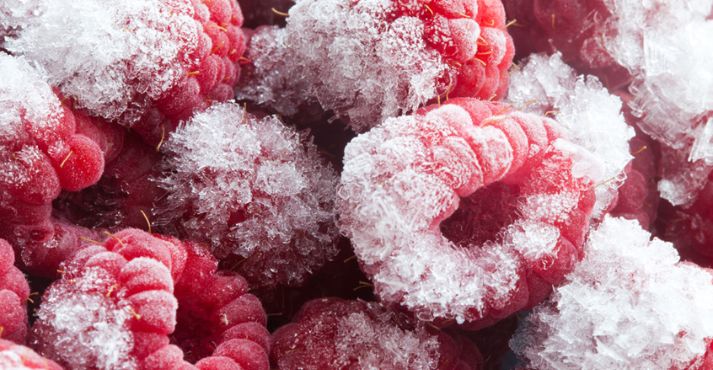
Sugaring, also known as candying or preserving in syrup, is a traditional method of preserving fruits and sometimes vegetables by immersing them in a concentrated sugar solution. The process involves dissolving sugar in water to create a syrup, then heating the syrup until it reaches a desired concentration. The fruits or vegetables are then submerged in the syrup and simmered until they become translucent and infused with sweetness.
Applications of Sugaring
Sugaring is commonly used to preserve fruits such as cherries, citrus peels, ginger, and pineapple, as well as certain vegetables like squash and sweet potatoes. Candied fruits are often enjoyed as snacks, used as toppings for desserts, or incorporated into baked goods such as cakes, cookies, and pastries. Additionally, sugaring can be used to create decorative garnishes for cocktails and desserts.
Advantages of Sugaring
- Extended Shelf Life: The high sugar content of the syrup creates an environment where bacteria and mold cannot thrive, effectively preserving the fruits or vegetables and extending their shelf life.
- Enhanced Flavor: Sugaring enhances the natural sweetness of the fruits or vegetables while adding a rich, syrupy flavor and aroma.
- Versatility: Candied fruits and vegetables can be used in a variety of culinary applications, from sweet treats to savory dishes.
6. Salting
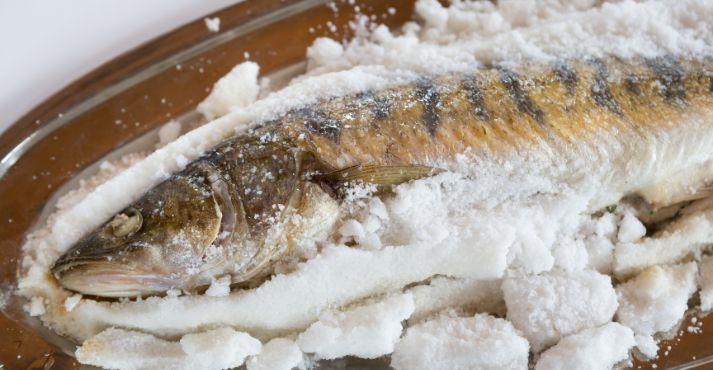
Salting, or curing, is a preservation technique that has been used for centuries to preserve meats, fish, and vegetables. The process involves applying salt to the surface of the food, which draws out moisture and creates an inhospitable environment for bacteria and other microorganisms. Salt inhibits the growth of spoilage organisms by reducing water activity and dehydrating the cells, effectively preserving the food and extending its shelf life.
Applications
Salting is commonly used to preserve meats such as bacon, ham, prosciutto, and salted fish. Cured meats are often enjoyed as standalone dishes, used as ingredients in sandwiches, salads, and pasta dishes, or incorporated into charcuterie boards and appetizer platters. Additionally, salted vegetables such as pickles and sauerkraut are popular accompaniments to meals and can be used to add flavor and texture to a variety of dishes.
Advantages
- Extended Shelf Life: Salting effectively inhibits the growth of spoilage organisms, allowing preserved foods to be stored for extended periods without refrigeration.
- Enhanced Flavor: Salt enhances the natural flavors of meats, fish, and vegetables while adding depth and complexity to the taste profile.
- Versatility: Salted foods can be used in various culinary applications, from simple snacks to gourmet dishes.
7. Freeze Drying
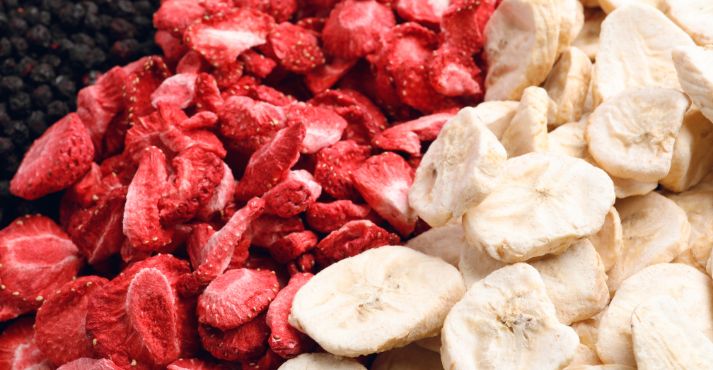
Freeze drying, also known as lyophilization, is a preservation method that involves freezing food at extremely low temperatures and then removing the ice by sublimation, where ice is converted into a gaseous state. This process removes water from the food while preserving its structure, flavor, and nutritional content. Freeze-dried foods have a long shelf life and are lightweight, making them ideal for camping, backpacking, and emergency food supplies.
Applications
Freeze-dried foods are famous for their long shelf life, lightweight nature, and ease of reconstitution. They are commonly used for camping, backpacking, outdoor activities, emergency food supplies, and military rations. Freeze-dried fruits, vegetables, meats, and dairy products can be rehydrated with water or other liquids to restore their original texture and flavor, making them suitable for use in various recipes and meals.
Advantages
- Extended Shelf Life: Freeze-dried foods have a significantly longer shelf life than fresh or dehydrated foods, often lasting several years when stored properly.
- Lightweight and Portable: Freeze-dried foods are lightweight and compact, making them ideal for travel, camping, and emergency preparedness.
- Retention of Nutritional Value: The freeze-drying process preserves the nutritional content of the food, including vitamins, minerals, and antioxidants.
8. Vacuum Packing
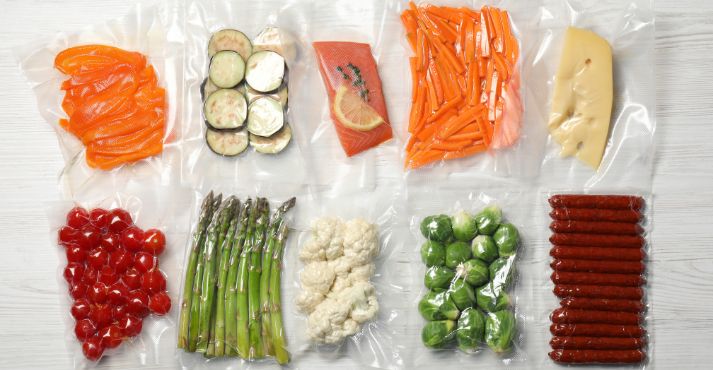
Vacuum packing is a preservation technique that removes air from a sealed container or pouch to create a vacuum environment. By eliminating oxygen, vacuum packing inhibits the growth of aerobic bacteria, molds, and yeast, which require oxygen to thrive. This method helps extend the shelf life of food by reducing oxidation and spoilage. Vacuum-packed foods are stored in refrigerators or freezers and include many items such as meats, cheeses, fruits, and vegetables.
Applications
Vacuum packing preserves various foods, including meats, cheeses, fruits, vegetables, and prepared meals. Vacuum-sealed foods can be stored in the refrigerator or frozen for long-term storage. Vacuum packing helps maintain the freshness, flavor, and nutritional quality of foods while preventing freezer burn and dehydration.
Advantages
- Extended Shelf Life: Vacuum-packed foods have an extended shelf life compared to foods stored in traditional packaging, as the vacuum environment inhibits the growth of spoilage organisms.
- Improved Freshness: Vacuum packing helps preserve the freshness, flavor, and texture of foods by reducing oxidation and exposure to air.
- Space-saving: Vacuum-sealed bags and containers take up less space in the refrigerator or freezer than traditional storage containers, allowing for more efficient use of storage space.
9. Ionizing Radiation
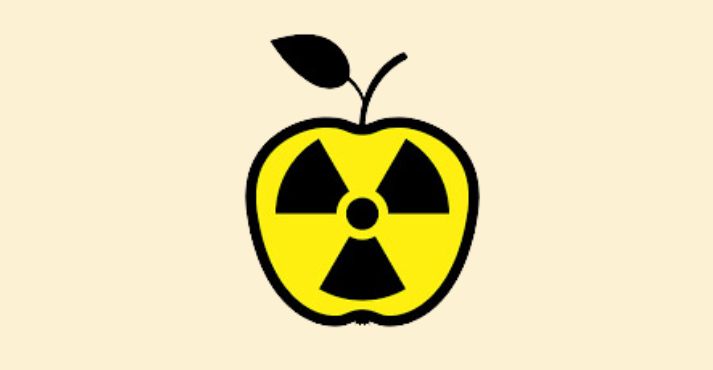
Ionizing radiation is a preservation method that involves exposing food to high-energy radiation, such as gamma rays, X-rays, or electron beams, to kill harmful bacteria, parasites, and insects. This process disrupts the DNA of microorganisms, rendering them unable to reproduce or cause foodborne illnesses. Ionizing radiation can effectively extend the shelf life of food by reducing spoilage and inhibiting the growth of pathogens. Common examples of irradiated foods include spices, herbs, poultry, and seafood. It’s important to note that foods treated with ionizing radiation must meet strict safety standards and labeling requirements to ensure consumer safety.
Applications
Ionizing radiation is commonly used to preserve a variety of foods, including spices, herbs, fruits, vegetables, poultry, seafood, and certain processed foods. Irradiation can help extend the shelf life of foods by reducing spoilage and inhibiting the growth of pathogens, which can lead to improved food safety and quality.
Advantages
- Improved Food Safety: Ionizing radiation effectively kills harmful bacteria, parasites, and insects, reducing the risk of foodborne illnesses and improving food safety.
- Extended Shelf Life: Irradiation can extend the shelf life of foods by reducing spoilage and inhibiting the growth of pathogens, allowing for longer storage and distribution.
- Preservation of Nutritional Quality: Ionizing radiation does not significantly alter the nutritional composition of foods, allowing for preservation of vitamins, minerals, and other nutrients.
Importance of Food Preservation
Food safety is a paramount concern in our daily lives, and food preservation plays a pivotal role in safeguarding our health by preventing foodborne illnesses. Understanding how food preservation inhibits bacterial growth and ensures safe consumption is essential.
The Role of Food Preservation in Food Safety
Food preservation techniques are specifically designed to inhibit the growth of microorganisms like bacteria, yeast, and molds, which can cause food spoilage and, more critically, pose health risks. Here’s how food preservation contributes to food safety:
- Bacterial Growth Inhibition: Preservation methods, such as canning, freezing, and fermentation, create conditions that hinder or eliminate the growth of harmful bacteria. For instance, canning involves heat treatment that destroys bacteria and prevents them from multiplying.
- Preventing Food Contamination: Properly preserved foods are less susceptible to contamination. The airtight seals in canning and the low temperatures in freezing create barriers that prevent external contaminants from infiltrating the food.
- Shelf Life Extension: By extending the shelf life of food items, preservation methods reduce the chances of consuming spoiled or unsafe products.
- Preservation of Nutritional Value: When applied correctly, food preservation techniques can retain the nutritional value of foods. This ensures that preserved items are not only safe but also nutritious.
- Reducing Food Waste: Effective food preservation minimizes food waste by allowing us to store and consume perishable items over an extended period. This contributes to a more sustainable and efficient food system.
Safe Food Handling
In addition to preservation, safe food handling practices are essential to ensure food safety. These practices include proper storage, cooking, and hygiene measures that reduce the risk of foodborne illnesses.
Preventing Foodborne Illnesses

Foodborne illnesses can lead to various symptoms, from mild discomfort to severe health issues. These illnesses are often caused by the consumption of contaminated or spoiled food.
By implementing food preservation techniques, we significantly reduce the risk of foodborne illnesses, promoting our well-being and overall health.
Minimizing Food Waste through Preservation: A Sustainable Approach
Food preservation is not just about prolonging the shelf life of our favorite edibles; it’s also a powerful tool in the fight against food waste. Reservation practices promote sustainability and resourcefulness by reducing food loss and its environmental impact.
The Connection Between Food Preservation and Waste Reduction
Food waste is a global issue with profound economic, environmental, and social consequences. A significant portion of food loss occurs due to Spoilage and expiration before consumption. Food preservation addresses this challenge in the following ways:
- Extending Shelf Life: Preservation techniques like canning, freezing, and drying significantly extend the shelf life of foods. This means that perishable items can be consumed well beyond their natural season or purchase date, reducing the likelihood of food being discarded prematurely.
- Reducing Spoilage: Preservation inhibits microorganisms’ growth and the Spoilage’s onset. By creating conditions unfavorable to bacteria, yeast, and molds, preservation methods help prevent food from going rancid.
- Year-Round Availability: Preservation allows us to enjoy seasonal produce yearly. This reduces the need for constant production and transportation of fresh items, decreasing the carbon footprint associated with food distribution.
- Sustainable Practices: Many preservation techniques align with sustainable and eco-friendly principles. For example, fermenting vegetables or fruits is a natural process that doesn’t require excessive energy or resources.
- Resource Conservation: Preserving food conserves the resources that go into producing it, including water, land, and energy. It’s a way of maximizing the resources invested in agriculture and food production.
- Reducing Environmental Impact: Food waste contributes to greenhouse gas emissions and environmental degradation. We can reduce these negative environmental impacts by minimizing food waste through preservation.
Promoting Sustainability and Resourcefulness
The synergy between food preservation and waste reduction is a powerful one. It helps protect the environment and promotes sustainable practices in our daily lives. When we use preservation methods to extend the life of our food, we embrace resourcefulness and contribute to a more efficient and environmentally friendly food system.
Conclusion
In our exploration of food preservation, we’ve discovered its crucial role in guaranteeing food safety, reducing food waste, and upholding culinary traditions.
It’s a seamless fusion of artistic creativity and scientific knowledge, linking us to our cultural heritage while championing sustainability. Through preservation, we protect our food, diminish waste, and embrace a more conscientious and delicious culinary future.




